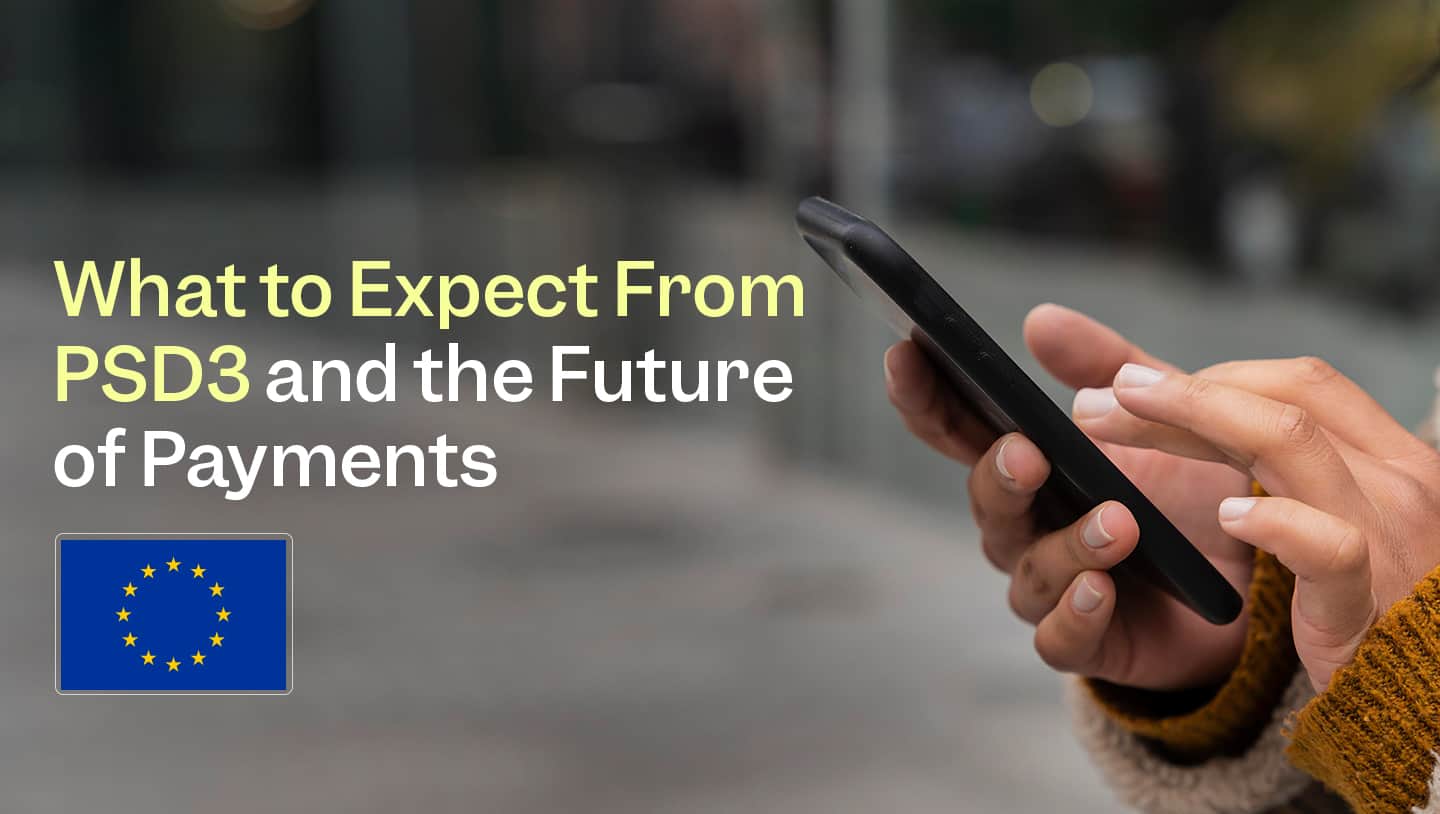
PSD2 was nothing short of a revolution for the European financial services market. It offered access to the traditionally reticent banking world for agile, young fintechs who keep consumer demands front of mind. Fast forward to 2023 and consumer demand continues to evolve. Cross-border mobile commerce is the new normal for many European shoppers, combined with a growing interest in instant payments. The financial services sector must also evolve and frequent updates to existing legislation like PSD2 are therefore vital. Let’s look at the current state of play with regards to PSD2, as well as potential implications of PSD3.
PSD2 and the Birth of Open Banking
PSD2 came into force with particular focus on customer experiences. It prioritised security, transparency and convenience. Notable effects of this include open banking, third-party access to customer account and payment data, and faster, more secure cross-border payments.
PSD2 aimed to remove the monopoly that banks have on the use of customer data. It allows other businesses to use that data with the customer’s permission. Doing so has eliminated much of consumers’ and businesses’ dependency on large banks. Banks are typically slow to address changing consumer demands and rely on older financial tools and computing systems.
PSD2 has increased competition within the European financial services sector. It has led to a more accessible banking system and encouraging a level playing field for traditional banks and fintechs.
Brite Payments’ founder and CEO, Lena Hackelöer, shares with The Paypers how merchants benefit from open banking, the impact that customer experience has had on payment innovation, and what we can expect from the future. Read the full article here
Let’s examine the implications of widespread access to high-speed payments:
Increased certainty: Open banking reduces the usual waiting period of one or more banking days before receiving funds. As such, consumers are more confident that their payments have arrived safely.
Faster refunds: This is particularly beneficial for travel or hotel bookings, as the consumer can quickly make alternative arrangements. Additionally, consumers tend to develop a greater degree of trust in the business that issued the refund.
Improved cash flow: From an accounting perspective, merchants can improve cash flow and rely less on credit. Faster reception of funds eliminates the need to hold and allocate as much money to ensure sound liquidity levels.

PSD3: What to Expect
PSD3 will start taking shape in 2023, though it may be some time before it fully comes into effect. A public consultation has been carried out and the next steps are underway. However, PSD3 has the potential to broaden its scope even further than its predecessor.
For instance, PSD2 mainly applies to traditional payment accounts and to the account providers of such services. As such, several other types of money transfers, transactions, and some financial institutions were omitted.
Even if PSD3 does not cover every institution and transaction, new legislation may clarify how transactions should be completed. For instance, PSD3 may help remove the uncertainty regarding the territorial scope of PSD2. This is particularly important where payment services are provided online.
Additionally, PSD3 may simplify things for the end customer, as well as enabling better financial decisions. The complicated nature of finance means many consumers do not have a solid understanding of investing, pensions, and other products. If PSD3 can help inform consumers about these topics, it would be a hugely positive change for the financial sector.

What We Hope to See Improved
As a provider of payment solutions, Brite is highly invested in how PSD3 will change the financial landscape in Europe. Here are a few of the changes we’d like to see introduced in any legislative update:
Testing: PSD3 will require financial institutions to adhere to certain standards and provide certain services. It is therefore vital that the legislation also outlines easier methods for testing. Doing so ensures appropriate quality assurance for payment solutions.
Clarity: It’s important that banks and other financial services providers clearly understand the requirements. For instance, we’d like to see more information on topics such as the minimum uptime on APIs and backups.
Increase flexibility: Some banks bind customers to their interfaces. There should be an opportunity for customisation within the payment process.

How Brite Helps Merchants Meet New PSD3 Standards
Implementation of PSD3 will differ slightly from bank to bank. Internal processes and the technology each institution uses will likely be entirely different. It can be hard for a bank to adapt its tech stack to meet new standards set by the revised legislation.
Brite Payments can handle the necessary connections and testing to ensure every financial institution covered by PSD3 is compliant with its rules and standards. We can build and offer an easy, well-documented API solution, so there is just one integration for merchants to use.
We follow the industry closely to ensure everything we do follows the latest guidelines. By using a payment solution from Brite, we make sure you are always compliant.
Brite Instant Payments is an open-banking service that enables businesses to securely and instantly receive money from customers, removing risk, improving cash flow, and reducing commission fees. Our solutions are compliant with all existing legislation, removing the worry about updates.

Want to keep up to date with PSD3 and ensure fast, secure transactions? Let’s talk.

